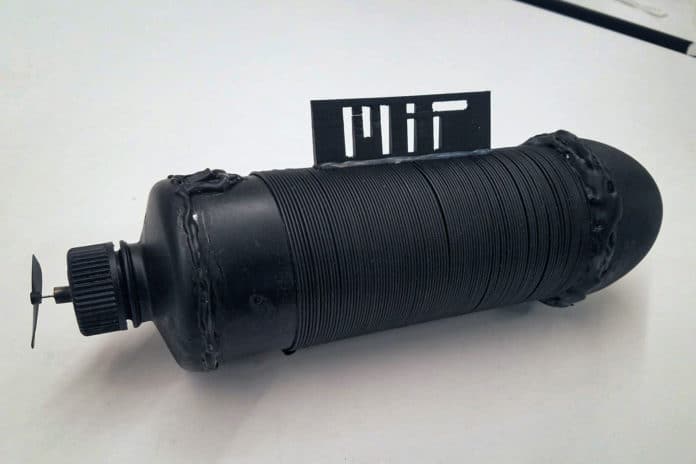MIT engineers have developed a rechargeable lithium-ion battery in the form of an ultra-long fiber that could be woven into fabrics. The “world’s longest flexible fiber battery” could enable a wide variety of wearable electronic devices and might even be used to make 3D-printed batteries in virtually any shape.
The new flexible fiber battery is manufactured using novel battery gels and a standard fiber-drawing system that starts with a larger cylinder containing all the components and then heats it to just below its melting point. The materials are then pushed through a narrow opening which compresses them to a fraction of their original diameter while maintaining all the original arrangement.
Previous efforts in making batteries in fiber form were structured with key materials on the outside of the fiber, whereas this system embeds the lithium and other materials inside the fiber with a protective outside coating, thus directly making this version stable and waterproof. It also incorporates the novel gel electrodes and a gel electrolyte, which makes the battery fire-resistant.
“When we embed the active materials inside the fiber, that means sensitive battery components already have a good sealing,” says the study author Tural Khudiyev “and all the active materials are very well-integrated, so they don’t change their position” during the drawing process.
The resulting battery is weavable, washable, and cut to a length of 140 meters is the longest flexible fiber battery in the world. The fiber produced so far has an energy storage capacity of 123 milliamp-hours, which can charge smartwatches or phones, Khudiyev says. The fiber device is only a few hundred microns in thickness, thinner than any previous attempts to produce batteries in fiber form.
“The beauty of our approach is that we can embed multiple devices in an individual fiber,” Lee says, “unlike other approaches which need integration of multiple fiber devices.” They demonstrated the integration of LED and Li-ion battery in a single fiber, and he believes more than three or four devices can be combined in such a small space in the future. “When we integrate these fibers containing multi-devices, the aggregate will advance the realization of a compact fabric computer.”
The team has already applied for a patent on the process and continues to develop further improvements in power capacity and variations on the materials used to improve efficiency. Khudiyev says such fiber batteries could be ready for use in commercial products within a few years.
